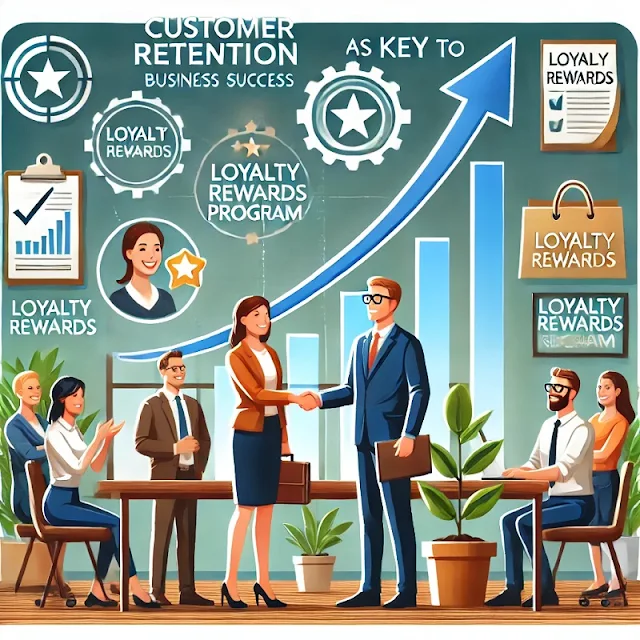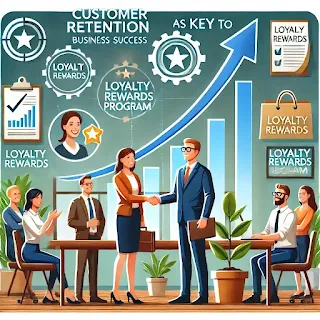In today’s highly competitive marketplace, businesses are constantly seeking ways to grow and maintain their profitability. While attracting new customers is often the focus of marketing and sales strategies, retaining existing customers is equally, if not more, critical to sustained business success.
Customer retention not only ensures a steady revenue stream but also fosters brand loyalty, reduces marketing costs, and encourages word-of-mouth referrals—all of which contribute to long-term growth and stability. This article explores the importance of customer retention and how it can be leveraged as a key driver of business success.
The Value of Existing Customers
1. Higher Profit Margins
Acquiring new customers is often more expensive than retaining existing ones. Studies indicate that it can cost five to seven times more to acquire a new customer than to keep an existing one. This cost disparity arises from the marketing, advertising, and sales efforts required to attract and convert new prospects. On the other hand, loyal customers already familiar with your brand and offerings are more likely to make repeat purchases, often spending more over time. Additionally, they tend to explore higher-margin products or services, leading to increased profitability.
2. Increased Customer Lifetime Value (CLV)
Customer lifetime value (CLV) is a critical metric that measures the total revenue a business can expect from a single customer over the course of their relationship. Retaining customers for the long term increases their CLV, which in turn boosts overall revenue. Businesses that focus on retention strategies such as personalized marketing, loyalty programs, and exceptional customer service can significantly enhance CLV, turning casual buyers into lifelong patrons.
3. Predictable Revenue Streams
Retained customers provide businesses with a more predictable and stable revenue stream. Repeat customers often make purchases on a consistent basis, which helps companies better forecast their sales and manage resources efficiently. This stability is especially beneficial for businesses operating on subscription-based models, where consistent renewals are essential to financial health.
Building Brand Loyalty
1. Emotional Connection
Loyal customers often have an emotional connection to a brand. This connection stems from positive experiences, consistent quality, and personalized interactions. Customers who feel valued and understood are more likely to remain loyal, even in the face of competition or minor price differences. By fostering emotional bonds, businesses can create a loyal customer base that acts as a buffer against market fluctuations.
2. Trust and Credibility
Retaining customers over time helps build trust and credibility. When customers consistently receive value and quality, they are more likely to advocate for the brand. Trust is a cornerstone of any business relationship, and loyal customers often become brand ambassadors, sharing their positive experiences with friends, family, and social networks. This kind of organic marketing is invaluable and cannot be replicated through traditional advertising alone.
Cost-Effectiveness of Retention
1. Lower Marketing Costs
Retained customers require fewer resources to maintain compared to acquiring new ones. Businesses can allocate less budget to customer acquisition campaigns and instead invest in retention strategies such as loyalty programs, email marketing, and customer appreciation initiatives. Retention-focused marketing not only saves money but also delivers higher returns on investment.
2. Reduced Churn Rates
High churn rates can be detrimental to a business’s bottom line. By focusing on retention, companies can reduce customer churn, thereby improving overall profitability. Understanding the reasons behind customer attrition and addressing pain points—whether through improved product quality, better customer service, or enhanced user experiences—can significantly decrease churn rates and improve customer satisfaction.
The Power of Word-of-Mouth Referrals
Satisfied and loyal customers are more likely to recommend your business to others. Word-of-mouth referrals are among the most effective and credible forms of marketing. People tend to trust recommendations from friends and family over advertisements or promotional campaigns. A single loyal customer can introduce your brand to several new potential customers, creating a ripple effect that amplifies your reach and reputation.
1. Social Proof
In today’s digital age, social proof plays a critical role in influencing purchasing decisions. Online reviews, testimonials, and ratings from existing customers can sway potential buyers in your favor. A strong focus on customer retention ensures that your current customers are not only satisfied but also willing to share their positive experiences publicly, further strengthening your brand’s credibility.
2. Advocacy Programs
Many businesses capitalize on customer advocacy by creating referral programs or incentives for loyal customers. These programs reward existing customers for bringing in new business, creating a win-win scenario that promotes growth without significant marketing expenditure. Advocacy programs are an excellent way to leverage the enthusiasm and satisfaction of retained customers to fuel your acquisition efforts.
Retention Strategies That Work
1. Exceptional Customer Service
Providing outstanding customer service is one of the most effective ways to retain customers. Businesses that prioritize timely, empathetic, and solution-oriented interactions stand out in customers’ minds. Investing in training customer service representatives and using technology to streamline support processes can go a long way in fostering customer loyalty.
2. Personalization
Customers appreciate brands that understand their preferences and needs. Personalization, whether through targeted marketing campaigns, product recommendations, or tailored communications, makes customers feel valued. Leveraging data analytics and customer insights can help businesses deliver more meaningful and relevant experiences.
3. Loyalty Programs
Loyalty programs are a tried-and-true method for encouraging repeat business. Offering rewards, discounts, or exclusive perks for repeat purchases incentivizes customers to stay with your brand. Well-designed loyalty programs can also foster a sense of exclusivity and belonging, further deepening customer engagement.
4. Proactive Engagement
Regular and proactive engagement with customers is essential to retention. This can include sending follow-up emails after a purchase, sharing helpful content, or offering periodic check-ins to gauge satisfaction. Proactive communication demonstrates that a business values its customers and is committed to their ongoing satisfaction.
Measuring Retention Success
To ensure that retention efforts are effective, businesses need to track key performance indicators (KPIs) related to customer retention. These include:
Customer Retention Rate (CRR): The percentage of customers retained over a given period.
Repeat Purchase Rate: The percentage of customers who make multiple purchases.
Net Promoter Score (NPS): A measure of customer satisfaction and likelihood to recommend your brand.
Churn Rate: The percentage of customers lost over a specific time frame.
By regularly analyzing these metrics, businesses can identify areas for improvement and refine their retention strategies.
Conclusion
Customer retention is a cornerstone of business success. While acquiring new customers is important, building lasting relationships with existing ones offers unparalleled advantages, including higher profitability, brand loyalty, cost savings, and organic growth through referrals. By implementing effective retention strategies and focusing on customer satisfaction, businesses can secure a competitive edge and ensure long-term success in a dynamic market environment. Ultimately, a loyal customer base is not just a source of revenue; it’s the foundation upon which sustainable business growth is built.
Subscribe by Email
Follow Updates Articles from This Blog via Email





No Comments